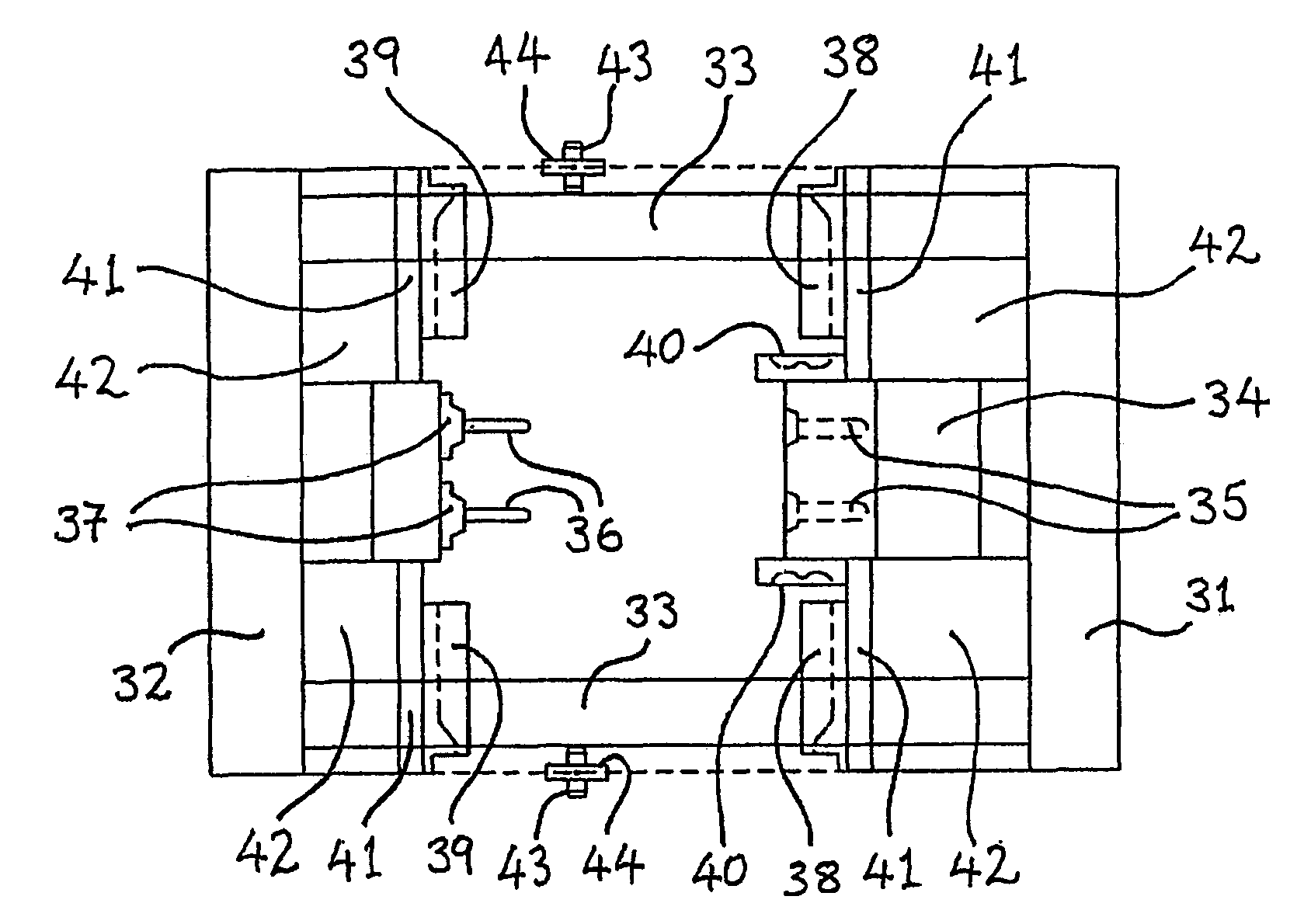Injection blow moulding of plastics articles
a technology of injection blow molding and plastics articles, which is applied in the field of injection blow molding of plastics articles, can solve the problems of affecting the production rate of plastics articles, affecting the production efficiency of plastics articles, and requiring lower outputs. achieve the effect of maximising the production ra
- Summary
- Abstract
- Description
- Claims
- Application Information
AI Technical Summary
Benefits of technology
Problems solved by technology
Method used
Image
Examples
Embodiment Construction
[0113]In the arrangements described below a composite mould set is made up of composite mould halves 10, which are mounted one on each machine clamping plate 12 (or platen) respectively of an injection moulding machine. The clamping plates are connected by four tie bars 14 in conventional manner.
[0114]A variety of different cavity arrangements can be used in the composite mould set of the present invention, with preference being given to symmetrical arrangements for even pressure loading of the clamp unit.
[0115]One such preferred arrangement is illustrated in FIG. 1, in which there are two vertical rows of preform cavities 16 arranged centrally in the machine clamping plate 12. The number of preform cavities per row shown in FIG. 1 is just an example. There could be more or fewer cavities per row, depending on the container's maximum neck diameter, the production output required and the size of the clamping unit of the machine to be used. This cavity arrangement would generally be m...
PUM
| Property | Measurement | Unit |
|---|---|---|
| rotation | aaaaa | aaaaa |
| rotation | aaaaa | aaaaa |
| time | aaaaa | aaaaa |
Abstract
Description
Claims
Application Information
 Login to View More
Login to View More - R&D
- Intellectual Property
- Life Sciences
- Materials
- Tech Scout
- Unparalleled Data Quality
- Higher Quality Content
- 60% Fewer Hallucinations
Browse by: Latest US Patents, China's latest patents, Technical Efficacy Thesaurus, Application Domain, Technology Topic, Popular Technical Reports.
© 2025 PatSnap. All rights reserved.Legal|Privacy policy|Modern Slavery Act Transparency Statement|Sitemap|About US| Contact US: help@patsnap.com



